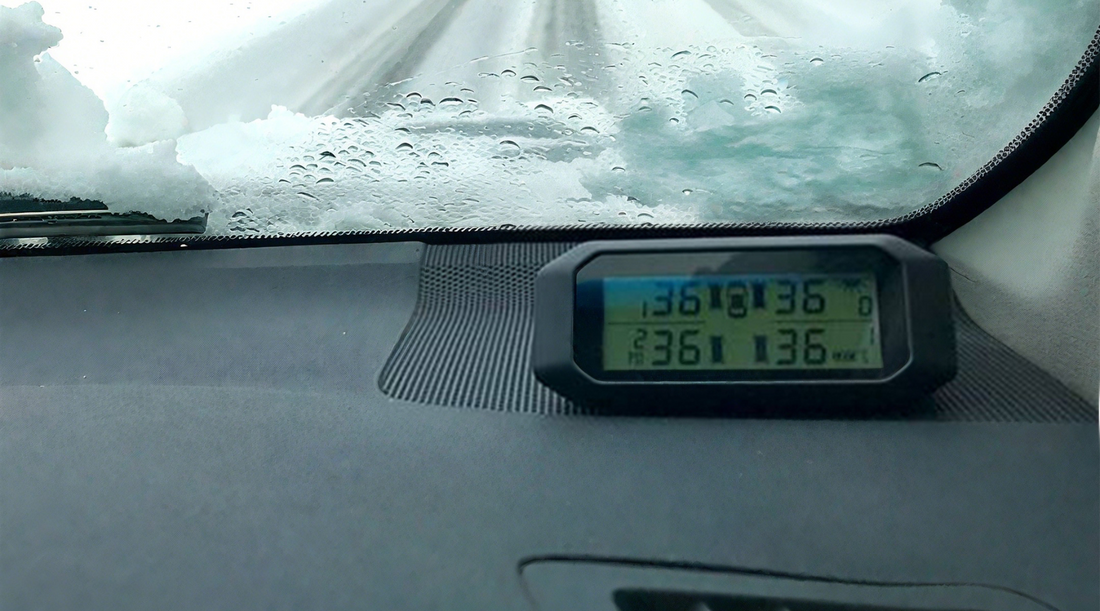
What is a Tyre Pressure Monitoring System (TPMS) & How Does it Work?
Tyres that are either underinflated or overinflated can lead to reduced fuel efficiency, faster tyre wear and even dangerous blowouts. That’s where a Tyre Pressure Monitoring System (TPMS) comes in. This technology monitors the air pressure inside your tyres in real time and alerts you if something is wrong - hence allowing you to take action before it becomes severe.
What is a TPMS?
A Tyre Pressure Monitoring System (TPMS) is an electronic safety device designed to keep an eye on the pressure inside your tyres in real time. It uses sensors that monitor pressure and then transmits that data to a dashboard inside your car. If there is a problem such as tyre pressure falling too low, you’ll get an audio and visual alert.
Its main goal is simple - to prevent unsafe driving conditions caused by underinflated or overinflated tyres. By giving you instant data, you’re much better prepared in case something goes wrong.
How Does a TPMS Work?
There are two main ways a TPMS can measure pressure. Direct TPMS uses small pressure sensors mounted either inside the tyre (internal sensors) or on the valve stem (external sensors). These sensors detect the exact air pressure and temperature, then transmit the data wirelessly to a display monitor in the vehicle. The second type is indirect TPMS. They don’t sense the air pressure directly. Instead, they use the vehicle’s wheel speed sensors to detect differences in rotation speed between tyres. When a tyre is underinflated, its diameter decreases slightly, causing it to rotate faster. The system detects this difference and triggers a warning. Indirect TPMS are generally less precise and may require setting re-configuring if tyres are swapped or the desired pressure range is changed.
Types of TPMS: Internal vs External
There are two main sensor types to choose from - internal and external. Both perform the same task but differ in how they’re installed and maintained.
External TPMS Sensors
These sensors are simply screwed onto the tyre’s valve stem in place of the valve cap - effectively double as both a sensor and valve cap. They are very easy to install and use DIY. Some variants also feature replaceable batteries that can be quickly and easily replaced without professional assistance.
The main disadvantage is they’re more prone to weather, environmental damage and theft. Though some variations come with security lock nuts that help prevent this.

Internal TPMS Sensors
They are installed inside the tyre itself - usually attached to the internal tyre frame. They have the advantage of being shielded from weather, dirt and external damage, often last longer and don’t interfere with inflation or deflation of tyres. However, they typically require professional tools or expertise to install.

Which Should You Choose?
The choice comes down to your needs and preferences. If you want a long-term solution and don’t mind professional installation, internal sensors are a great option. If you prefer DIY installation and easy maintenance, external sensors suit best.
Benefits of Using a TPMS
It may seem unnecessary at the beginning but especially for people with off-road vehicles, those travelling long distances in Australia or if you’re pulling trailers, a TPMS kit is a genuine safety and cost-saving tool. The main benefits are below:
- Enhanced Safety - The right tyre pressure means better grip, shorter braking distances and improved vehicle stability. A TPMS warns you of slow leaks or sudden pressure drops, helping you avoid blowouts and loss of control.
- Longer Tyre Life - Underinflated or overinflated tyres wear unevenly, reducing their lifespan. By maintaining optimal pressure, you’ll get maximum value out of your tyres and prevent pre-mature replacements.
- Better Fuel Efficiency - Did you know that mis-inflated tyres can burn up to 10% more fuel? This is because low tyre pressure increases rolling resistance hence making your engine work harder and burn more fuel.
- Convenience & Peace of Mind - Instead of manually checking tyres with a gauge, you’ll now be able to see real-time pressure and temperature readings at a glance. It’s one less maintenance task to worry about on busy days or long trips.
- Prevent Tyre Fires - If a tyre is underinflated the heat caused by friction between the tyre and the ground could quickly build up and potentially pose fire hazards.
- Reduced Environmental Impact - By improving fuel economy and reducing tyre waste, you’re also lowering your carbon footprint - good for your wallet and the planet.
TPMS in Australia
In Australia, Tyre Pressure Monitoring Systems are becoming increasingly popular among off-roading enthusiasts, long distance drivers, caravan owners and commercial operators. Harsh road conditions, long travel distances in regions like the Australian Outback and high summer temperatures make tyre blowouts a real risk. With the right setup, Australian drivers can travel with greater confidence, whether on busy city roads or remote tracks.



